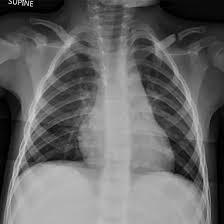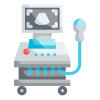Book an Appointment
NCCT for Clavicular Joint
Medifyhome has collaborated with the best pathology laboratories that are NABL and NABH certified and follow ISO safety guidelines to provide the best NCCT for Clavicular Joint at an affordable price for needy individuals. NCCT over the clavicular joint is a recent imaging modality used to create cross-sectional images regarding the clavicle with less complexity without contrast. This minimally invasive process uses the highest quality X-rays that are a crucial diagnostic aid when it comes to different ailments associated with the shoulder and collarbone regions. Thus, NCCT is especially efficient in the examination of fractures, dislocations, tumours, infective processes, and degenerative changes of the clavicular joint. Given the benefits that NCCT of the clavicular joint presents in terms of speed, safety, and improved imaging, this modality provides a central role in current diagnostic imaging techniques. It has importance in situations where such patients need to be attended to urgently, as well as in more calmly planned cases, and complements the patient’s treatment in every context by helping to make decisions as to how the patient with a clavicular joint problem should be treated. To schedule an appointment for an NCCT for Clavicular Joint, simply contact Medifyhome or call our customer care at +919100907036 or +919100907622 for more details and queries.
What is NCCT?
SPECT, or Single Photon Emission Computed Tomography, is a special type of imaging that is based on the use of X-rays to create detailed images of the body without using dyes or contrast agents known as NCCT or Non-Contrast Computed Tomography. Unlike conventional CT scans, where the subject might be injected with contrast media to help highlight the tissues of interest, NCCT centres on getting good images based solely on X-ray absorption. NCCT scans are obtained with the help of a series of images collected in one plane with the help of X-ray images. Subsequently, connected images are analysed by a computer to create detailed cross-sections of the area under study. Usual in examinations for fractures, tumors, infections, or diseases that involve bones and soft tissues. It is very useful, especially in an emergency where the assessment has to be done very fast. The application of NCCT scans is usually rapid and therefore is favorable in emergency cases. Especially beneficial for reading particularities at the joints, such as fingers and wrist bones, spine, etc. Assists in diagnosing tumours that affect the bones, infections, as well as degenerative diseases. Does not require the use of contrast agents to identify trauma or acute conditions in the first instance.
Indications for NCCT of the Clavicular Joint
Non-Contrast Computed Tomography, or commonly known as NCCT, of the clavicular joint is helpful in different case presentations. Here are some common indications for performing an NCCT scan of the clavicular joint:
- Fractures
Clavicular Fractures: To visualize more difficult or shifted fractures of the clavicle that may not be visible during the normal radiographic examination.
Joint Fractures: Examination of cases of fracture of the middle part of the clavicle, particularly the AC joint or sterno-clavicular joint.
- Dislocations
AC Joint Dislocations: Diagnosis and measuring the severity of pathologies that occur at the acromioclavicular joint.
Sternoclavicular Joint Dislocations: Assessing dislocations that may need surgical management or need to be further dealt with.
- Bone Tumors
Detection and Characterization: Locating the bone tumors or lesions in the clavicle area and helps to know about their size, classification and possibility of malignancy.
Monitoring: Watching an already defined tumor for any signs of change in size or morphology over time.
- Arthritis Evaluation
Degenerative Changes: Evaluation of osteoarthritis or other inflammatory diseases, such as arthritis of the clavicular joint, narrowing of the joint space, and formation of bone spurs.
- Infections
Osteomyelitis: Primer for suspected infections in this area, especially clavicle or formation of abscesses within or around the bone.
Septic Arthritis: Recognizing infection confined strictly within the joint cavities.
- Post-Traumatic Assessment
Healing Evaluation: Supervision of the progress of previous injuries, such as fractures and joint dislocations.
Complications: To evaluate for complications such as malunion or nonunion of clavicular shaft fractures.
- Pre-Surgical Planning
Surgical Guidance: To help surgeons identify both the type of dislocation and the extent of damage to the clavicular joint and other structures, to aid in preparation for surgeries that might involve repairing or reconstructing the joint.
- Congenital Anomalies
Anomaly Assessment: Examining a child with congenital malformations or developmental disorders of the clavicle and reference structures.
Benefits of NCCT for the Clavicular Joint
Several advantages of Non-Contrast Computed Tomography (NCCT) in evaluating the clavicular joint have been pointed out. Here are some key benefits:
- High-Resolution Imaging
Detailed Visualization: NCCT yields superb visualization in imaging, thereby enabling assessment of the clavicle, the AC joint, and adjoining structures.
- No Contrast Agents Required
Reduced Risk: Since NCCT does not require contrast material, there is no danger involved due to the allergens or complication arising kidney issues from contrast material.
- Rapid Acquisition
Quick Procedure: The scanning process is generally quick; in most cases, it can take only several minutes, which is helpful in cases of a patient’s emergency or those who cannot spend much time on their feet.
- Comprehensive Assessment
Bone and Soft Tissue Evaluation: Application of NCCT enables the demonstration of both the cortical and the soft tissues, including the fractures, tumors, and joint disorders.
- Effective for Complex Cases
Fracture Detection: Especially valuable for diagnosis of a fracture type that may not be evident during the X-ray examination, as well as for better assessment of the injury condition.
- Delivering information involves helping the patient with the decisions of his or her treatment.
Informed Management: These detailed images assist the practitioners in making sound decisions about the client’s care, specifically, whether he/her require surgery.
- Monitoring and Follow-Up
Tracking Progress: NCCT can be utilized to check the time course of clavicular trauma or to evaluate the efficacy of treatment for some pathology.
- Non-Invasive Procedure
Patient Comfort: NCCT is a non-invasive procedure that usually rarely involves patients in any preparation, and therefore, patients immediately begin their normal activities following the scan.
What to Expect During the Procedure
- Preparation
Clothing: Sometimes they may require you to undress and wear a hospital gown because your garments might influence the outcome. Get the patient to undress excluding under garments and remove all items that contain metal around the region of interest for imaging.
Medical History: This is the best time to define all possible medical history, including allergies, previous conditions, or previous imaging studies.
- Arrival at the Imaging Center
Check-In: When you get there, you are admitted to the imaging department. Employees will acknowledge your meeting and tell you more on the procedure.
Consultation: A radiologic technologist will go through the procedure and ask us if we have any questions about it.
- Positioning for the Scan
Comfortable Positioning: You may be seated or lying on your back, depending on which way the CT scanner is set.
Specific Hand Placement: Your arm will be positioned in a particular way to get the best views of the clavicular joint.
- The Scanning Process
Breath-Holding: Possibly it will be required from you to close your lips for some several seconds during the test to minimize the movement and obtain sharp images.
Duration: The scanning process actually only takes a few minutes of your time. You will hear a whirring or buzzing sound as the machine takes the images.
- Post-Procedure
Immediate Results: You do not get an instant result; the images will be read by a radiologist.
Normal Activities: Most of the time, you can go back to your normal ways, and there is no particular aftercare recommended.
- Test Type: NCCT for Clavicular Joint
- Preparation:
- Wear a loose-fitting cloth
- Fasting not required
- Carry Your ID Proof
- Prescription is mandatory for patients with a doctor’s sign, stamp, with DMC/HMC number; as per PC-PNDT Act
- Reports Time: With in 3-4 hours
- Test Price: Rs.5000
How can I book an appointment for an NCCT for the Clavicular Joint through Medifyhome?
To schedule an appointment for a NCCT For Clavicular Joint, simply contact Medifyhome or call our customer care at +919100907036 or +919100907622 for more details and queries.
What is the NCCT of the clavicular joint?
NCCT stands for the Non–contrast Computed Tomography of the clavicular joint and is an imaging method that employs X-rays to provide high-sectional images of the clavicle and the adjacent areas without the use of a contrast medium.
What could I possibly require to have an NCCT scan of the clavicular joint?
An NCCT scan is usually advised to determine fractures, dislocations, tumors, arthritis, and infections in the clavicular joint and soft tissues.
Is the NCCT scan painful?
However, regarding the scan itself, the scan is actually painless. It can be slightly painful when your arm remains in the same position, but imaging does not hurt.
What is the duration of the procedure?
Scanning takes a few minutes, depending on the level of detail that a person wants to have on the object that is scanned. However, the total amount of time spent in a visit could be longer due to time spent setting up and waiting during the assessment of one station.
Am I allowed to have any preparation before the scan is done?
As for special preparations, there is usually no need for it. Depending on the area of the body scanned you may be asked to remove any jewelry or metal items that you may be wearing.
What are the complications of NCCT?
However, and despite the fact that NCCT exposes the patient to a low dose of ionized radiation, there is little harm as a result of this. The advantages of correct diagnosis generally surpass these worries, and it is less dangerous than contrasting enhanced filters for allergic or renal sufferers.
What should one feel or do after the scan?
It is good to note that you can go about your daily business immediately after having this procedure done to you. Again, there are no special precautions or directives that should be followed after the scan.
Most Booked Ct Scan Parts
With Medifyhome, book a CT scan get the fastest appointment scheduling at NABH & ICMR Certified diagnostic centers near you. Trusted reports, expert radiologists, and seamless service-only a click away!
Why Choose Medifyhome for NCCT for Clavicular Joint?
Medifyhome is an online medical consultant that provides home-based medical services not only in your area but also in most cities in India, including Hyderabad, Chennai, Mumbai, Kolkata, and more. We have collaborated with diagnostic centers that have the best machines and equipment to ensure you get accurate results. Medifyhome provides 24-hour customer service for booking the appointment of the services and guides you with instructions. Medifyhome also provides the best diagnostic centers at low prices. Once you receive your test results, you can easily book an appointment with our network of experienced doctors for consultation. To schedule an appointment for an NCCT for Clavicular Joint, simply contact Medifyhome or call our customer care at +919100907036 or +919100907622 for more details and queries.













